After reading this detailed guide on the humble bean juice, you'll raise your arm faster than Hermione Granger when asked: "what is aquafaba?". We'll discover the contents, special tips to use, nutritional values, as well as the origins of this mighty egg substitute!

Jump to:
🫘 What is Aquafaba?
Aquafaba is the viscous liquid in which legumes were cooked. The most popular legume liquid for aquafaba is of chickpeas, but any other bean broth with sufficient viscosity and a somewhat bland flavor profile can be used.
Aquafaba is commonly used as an egg white substitute in vegan or egg-free baking.
The name was coined by Goose Wohlt, a software engineer from Indiana, and his 45,000 internet friends after Googling "Latin for bean" and "Latin for water"... Aqua (water) + Faba (bean) = Bean Juice!
Their other considerations were "L'egg" and "bloop". I wish this phenomenal PR team could also rename some other inaptly-named wonderful plant foods like prunes...

💡 How and When Was Aquafaba Discovered?
Like many great discoveries, aquafaba was created in a moment of desperation. In early 2010s, the Parisian opera tenor Joël Roessel was indeed desperate to find the decadent dessert île flottante that would suit his vegan diet.
You see, île flottante (or "floating island" in French) is a dessert made with meringue whipped of egg whites laid atop crème anglaise—it certainly is not vegan.
So Mr. Roessel asked himself: “What would disgust me as much as a raw egg white?” and proceeded to whip the juice from canned red beans from his pantry along with some sugar.
Within a few minutes, the fluffy white meringue peaks he'd been missing since he went vegan appeared at the end of his mixer's whisk.
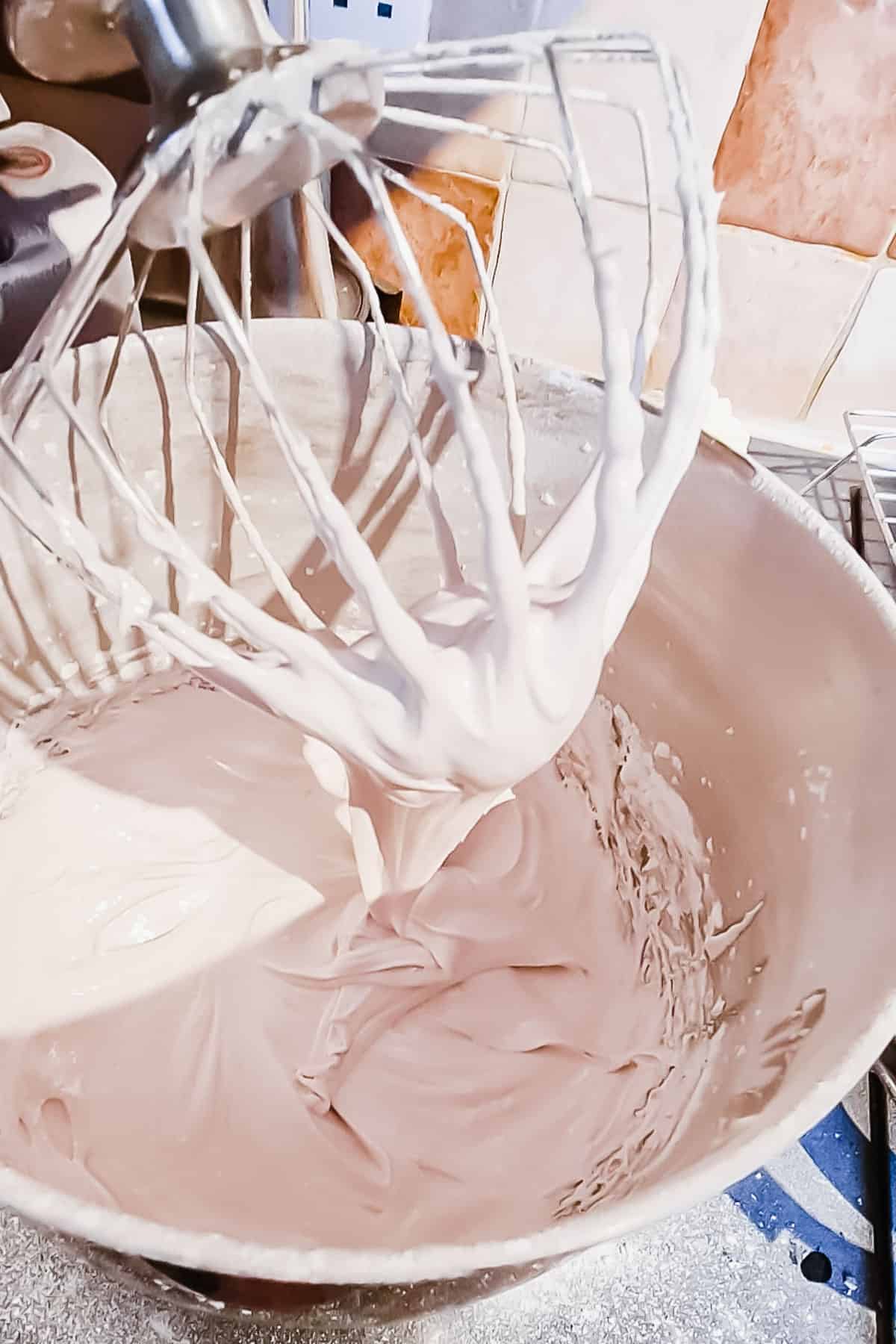
In March 2015, the vegan meringue recipe made of aquafaba went viral on the Facebook group "What F.A.T. Vegans Eat", and a new Facebook group "Aquafaba (Vegan Meringue - Hits and Misses!)" was born.
So, astonishingly, aquafaba was not the product of food scientists in pristine lab coats working on the next big food craze—but rather of a deep craving for veganized meringue by a French tenor.
🧪 Nutritional Aspects of Aquafaba
Mr. Wohlt not only coined the term "aquafaba", he also raised money online to fully analyze it. When his fundraiser reached the target of $650 in 2016, an unsalted 365 brand Tetra-Pak aquafaba was sent to the lab. These were the results:
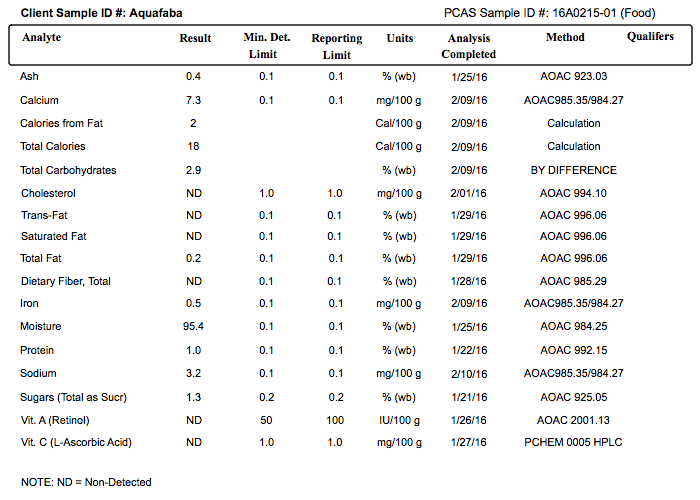
As you can see, the macronutritional profile of aquafaba is vastly different from an egg. Let's compare a few of these macros by weight to illustrate:
- Aquafaba is 1% protein vs. an egg is 14%
- Aquafaba is 0.2% fat vs. an egg is 11%
- Aquafaba is 3% carbohydrate vs. an egg is 2%
- Aquafaba is 95% water vs. an egg is 73%
- Per 45 grams, an egg has 70 calories and aquafaba has 9 calories
To substitute eggs with aquafaba in the best way, these comparisons become very important!
In baking, denaturing proteins can provide binding, and fats can provide shortening. Those percentages are nowhere close.
But if the profiles of eggs and aquafaba are indeed so different, then how come we successfully use the bean liquid as a substitute? Let's explore the science behind it.

🧬 The Science of Aquafaba
Nobody knows exactly why aquafaba can do what an egg does. It can provide leavening and structure even though only 1% of it is made of protein by weight. But the famous food scientist Harold McGee has an idea!
McGee hypothesizes that the dissolved starch and saponins in the bean broth slow the collapse of foam and stabilize bubbles.
The word saponin itself comes from the Latin for soap: sapo.
So even though there are virtually no proteins in soapwort that would help with denaturing and provide structure when making new bonds, the saponins are thought to be working in a very similar way.
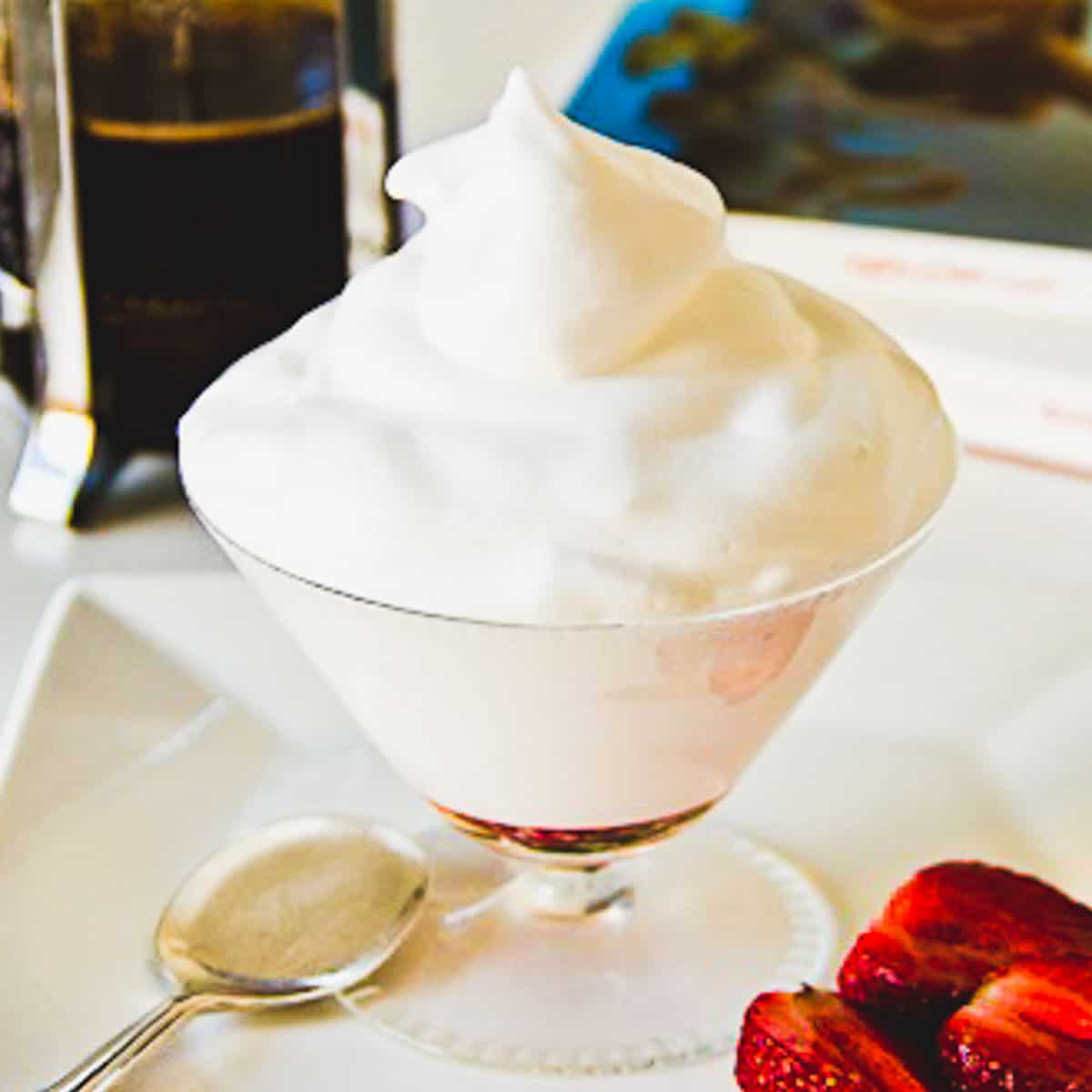
McGee's hypothesis makes a lot of sense to me. In fact, the rest of the world has been using saponins in food for a long time!
Lebanese cuisine has had egg-free meringues (natef) made with saponaria officinalis, also known as soapwort or bois de Panama, for centuries. Turks use soapwort extract in the marshmallow-like Turkish delight called "saray lokumu" and in tahini halva to strengthen its structure.
I think come 2030, soapwort may be the new aquafaba in egg-free baking!

🥣 How To Use Aquafaba
Now that we understand its nutritional profile and the science behind it, let's put everything into real-life context to replace eggs.
You will see "3 tablespoons of aquafaba per egg" all over the internet. This is incorrect.
An average medium-sized chicken egg weighs 45 grams and ~75% of it is water. The rest is largely fats and protein.
However, aquafaba is made up 95% of water so using an extra tablespoon can drastically change the moisture content in some recipes!

What you should do instead is to maintain the fat and moisture ratios in the recipe while making sure the substitute can still leaven, emulsify, and/or bind your bakes.
That's why adding a type of starch and more fat is often essential.
Here's how to use aquafaba to replace one medium-sized chicken egg in most baked goods:
- 2 tablespoons (30 ml) of aquafaba
- 1 tablespoon (7.5 grams) of cornstarch
- ½ tablespoon (5 grams) of vegan butter or vegetable oil—added along with the rest of the oils/butter in the recipe to compensate for the fat in eggs
If the recipe instructs whipping the egg whites first to create structure—such as in angel food and chiffon cakes—whisk the aquafaba by itself first and mix the cornstarch with other wet ingredients instead.
Otherwise, mix the cornstarch with the aquafaba right away.
See this guide on how to substitute eggs in different situations. We tested eight popular replacements to see what worked best.
Keep in mind that eggs serve a different purpose in cakes than they do in cookies so aquafaba may be the wrong choice for what you're making!
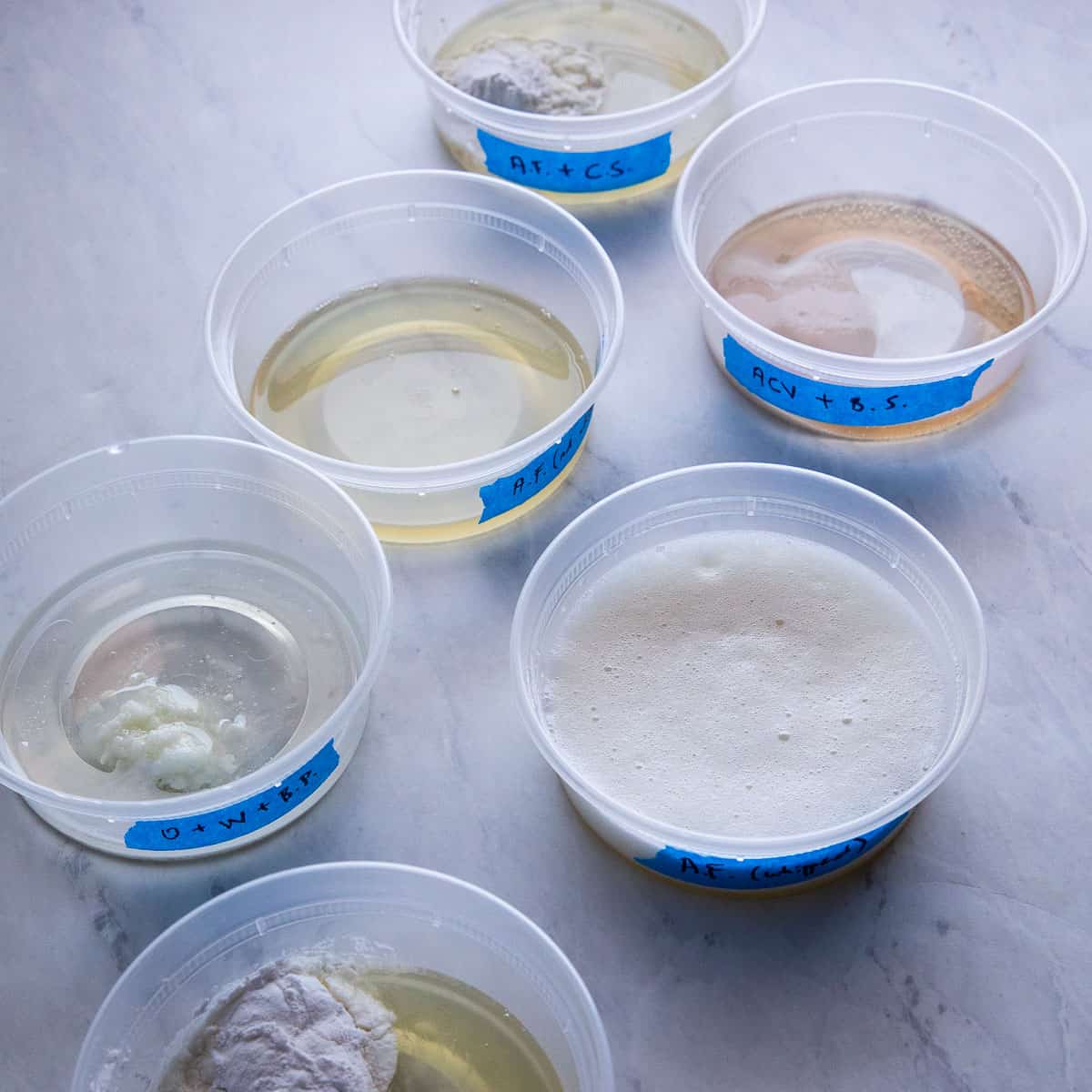
How About Aquafaba From Different Beans?
Aquafaba can be the liquid from any cooked legume, but chickpea aquafaba from a can tends to have the right (i.e. the thickest) consistency.
If your aquafaba doesn't seem thick enough, you can always reduce it on the stove.
Ideally, use unsalted or low-sodium aquafaba from BPA-free cans or Tetra-Pak packaging.
In a 15.5 oz (440 grams) can of chickpeas, there are approximately 200 ml of aquafaba and 240 grams of chickpeas.
In my experience, reducing canned chickpea liquid has never been necessary, whereas the broth from pinto and black beans were much thinner.
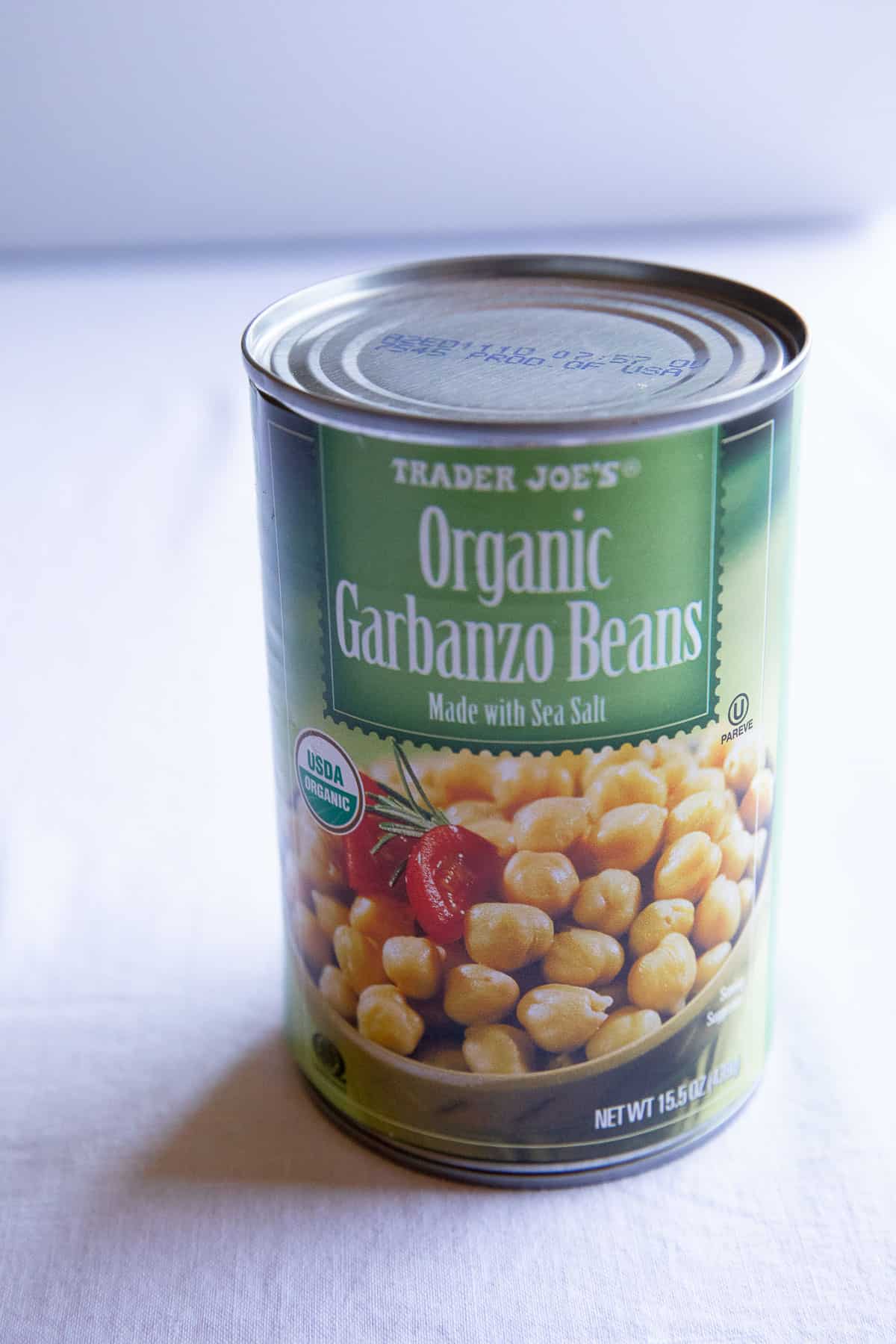
Should You Whip Aquafaba Before Using It?
Not really! The saponins in aquafaba seem to work very similarly to the denaturing proteins in eggs, so we can use the same treatment.
For example, if a recipe calls for eggs beaten with sugar, use aquafaba straight from the can in the same way.
When I tried using whipped aquafaba to replace non-whipped eggs in a reverse-creamed cake recipe, the result was much fluffier.
This is expected and is ideal for pancakes, cupcakes, etc.—but not great for a layer cake where you need more density.
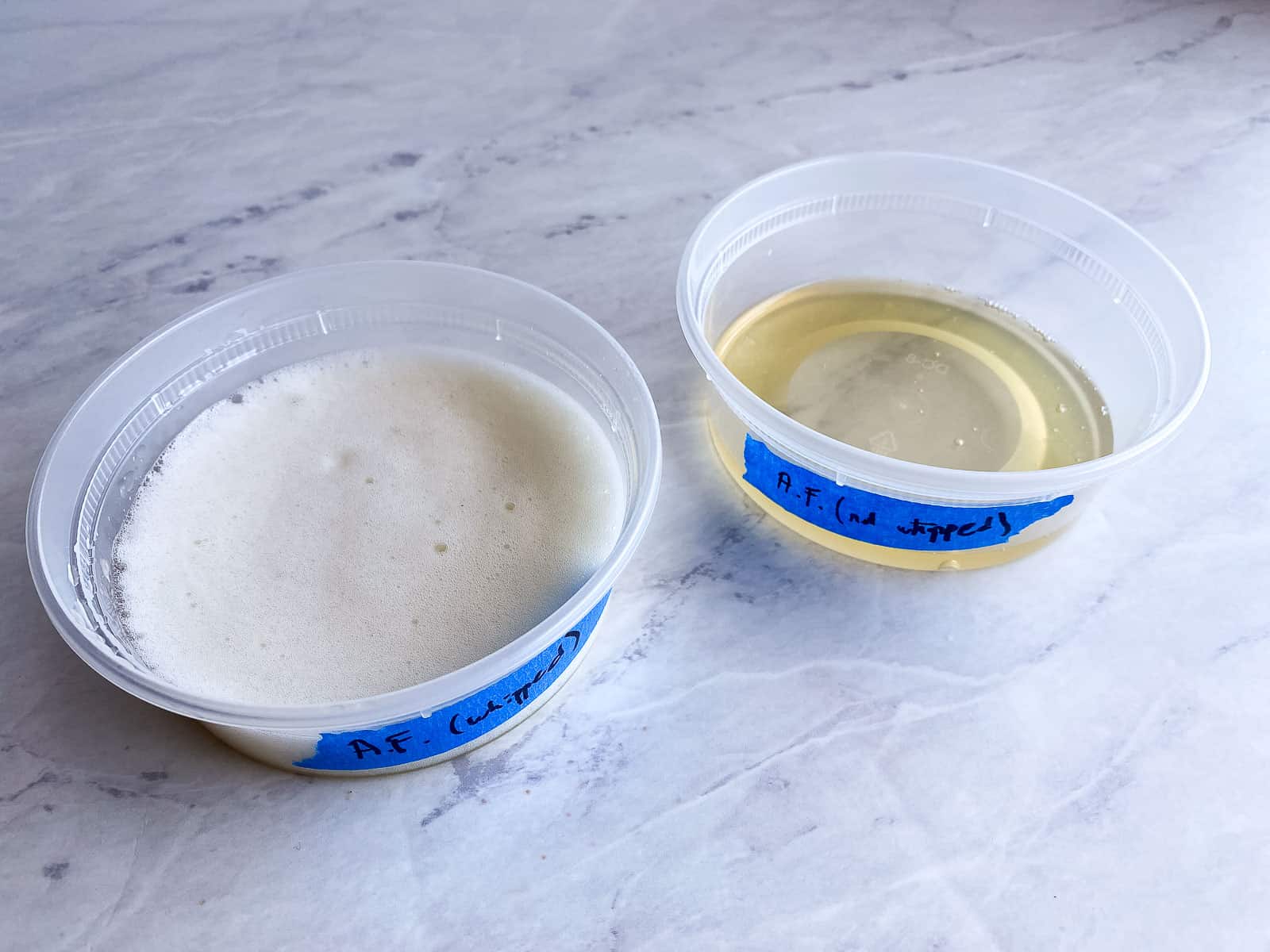
When replacing whipped egg whites, just whip aquafaba instead. If you are replacing multiple whisked egg whites in a recipe, such as in an angel food cake, use a dash of cream of tartar!
Less than ⅛ teaspoons of cream tartar per 3 "eggs" will help the aquafaba come to firm peaks much quicker.
🍮 Where To Use Aquafaba
Aquafaba isn't the best egg replacer in every scenario. See my thorough vegan egg substitutes guide to see exactly when to use which!
We compared eight common egg substitutes (five of which included aquafaba) and taste-tested the best vanilla cake with our resident Flavor Scientist (aka professional taster, aka my husband).
Cakes & Pancakes
For cakes, replace each medium egg (45 grams) with a mixture of:
- 2 tablespoons (30 ml) of aquafaba
- 1 tablespoon (7.5 grams) of cornstarch
- ½ tablespoon (5 grams) of vegan butter or vegetable oil—added along with the rest of the oils/butter in the recipe to compensate for the fat in eggs
If the recipe instructs whipping the egg whites first to create structure—such as in angel food and chiffon cakes—whisk the aquafaba by itself first (with a sprinkle of cream of tartar) and mix the cornstarch with other wet ingredients instead.
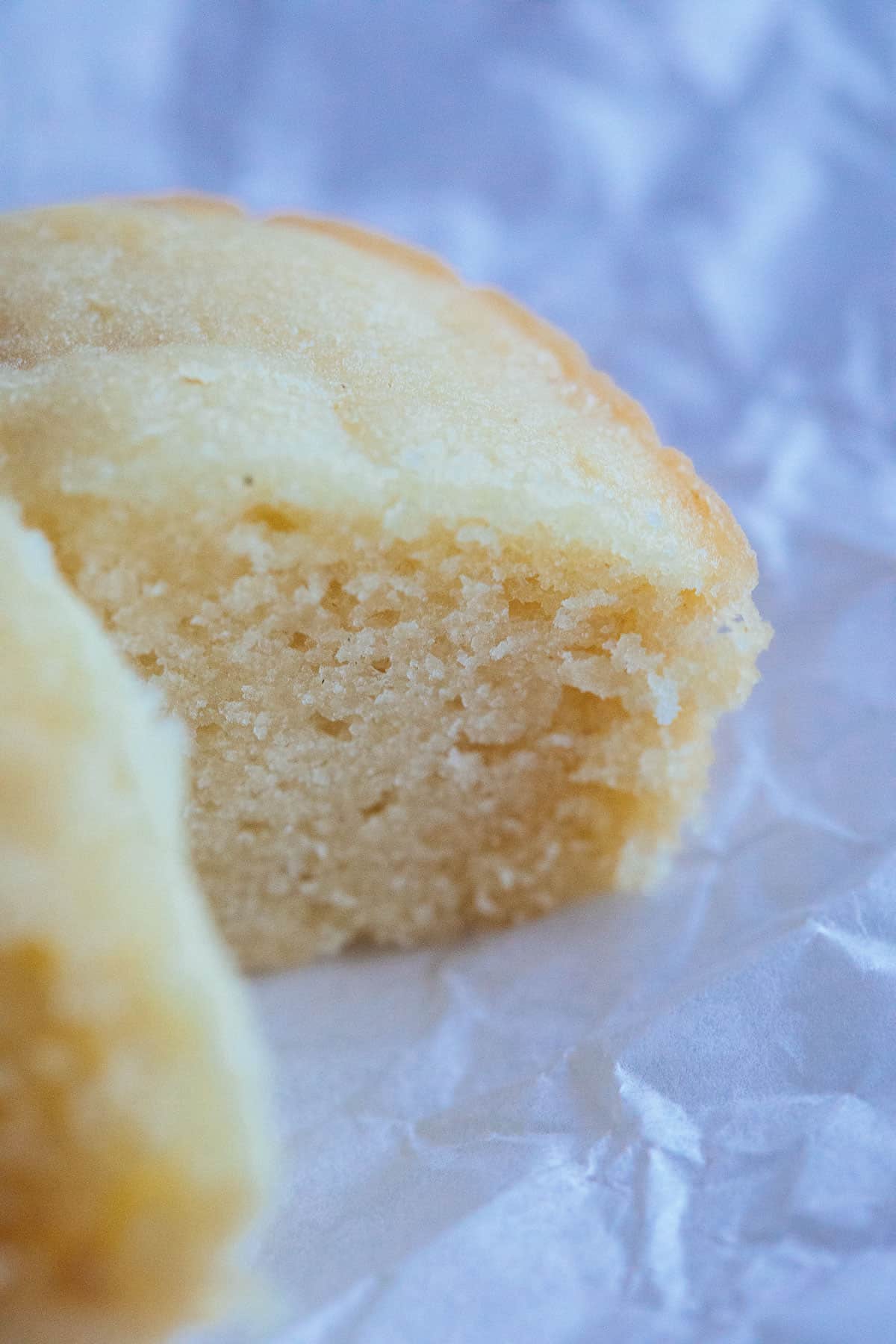
Macarons & Meringues
The most impressive use of aquafaba is in making meringues. Prior to aquafaba's discovery, there simply wasn't any proper substitute for plant-based meringues besides soapwort extract—which isn't exactly accessible.
For meringues, replace one whipped egg white with 2 tablespoons (30 ml) of aquafaba (whipped for longer for the same consistency), and add 1 tablespoon of cornstarch mixed in with the sugar. A sprinkle of cream of tartar (less than ⅛ teaspoons per 3 "eggs") helps aquafaba come to firmer peaks quicker.
On average, you'll need to whip the aquafaba on medium-high speed with a stand or hand-held mixer for 6-10 minutes to get to somewhat-firm peaks.
Cream of tartar usually cuts that time by at least a third. I don't recommend whipping aquafaba by hand—I gave up after 15 minutes of whipping with a whisk and not reaching even soft peaks...
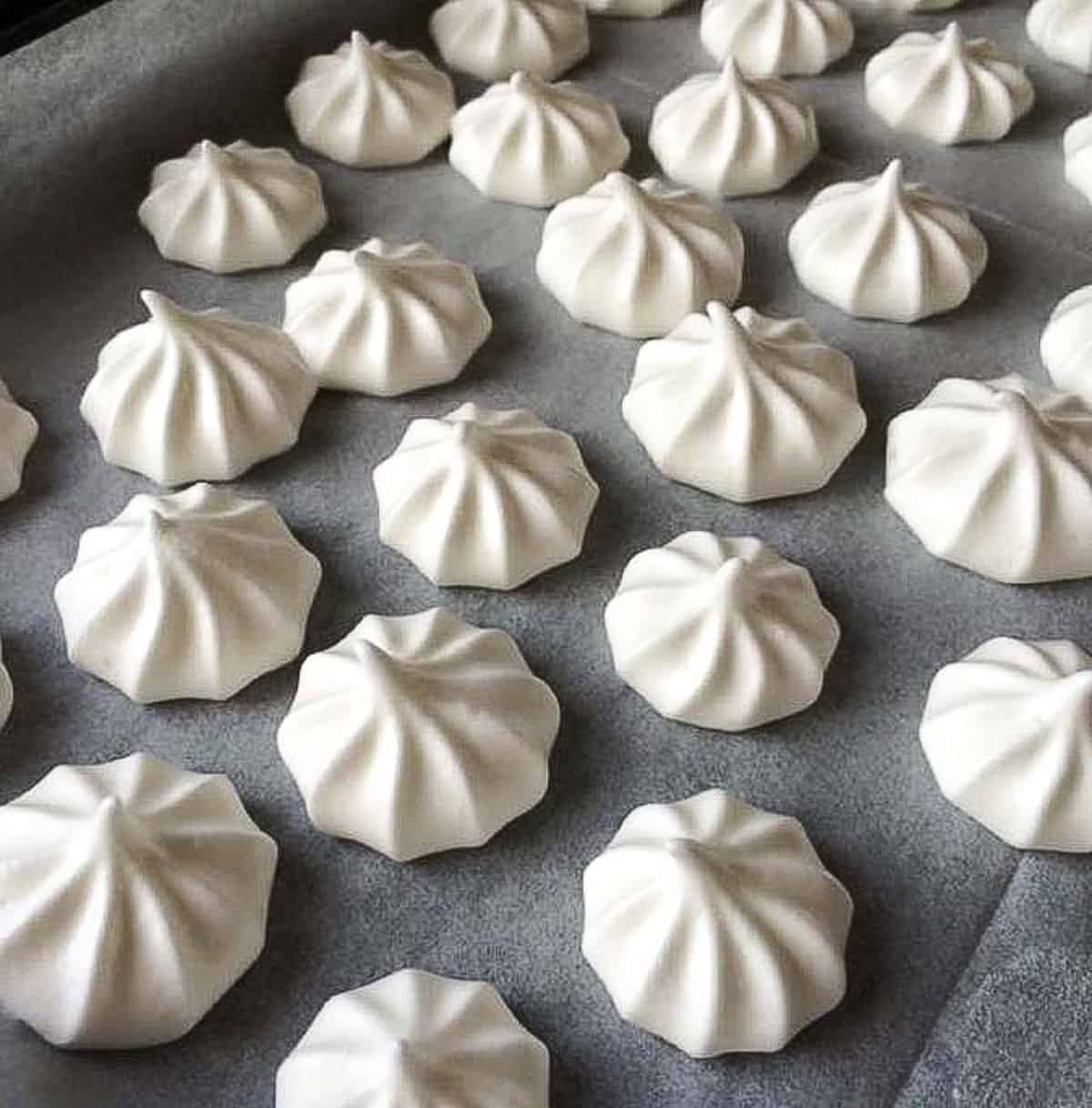
Egg White in Cocktails
In cocktails, replace each egg white with 30 grams of aquafaba with ½ teaspoon of sugar and whip to desired consistency.
Since aquafaba does have a bean-like taste, especially when consumed raw, you really need the sugar to mask it.
Vegan Brown Butter
Lastly, I love this brown butter recipe by Okonomi Kitchen! The aquafaba starches and saponins seem to somehow help replace the milk solids in regular browned butter and aid in emulsifying it.
Where Not to Replace Eggs with Aquafaba...
I don't recommend using aquafaba to replace eggs in cookies, custards, quiches, or crepes. An egg's first and foremost mission in these recipes is to provide binding, where aquafaba is insufficient or downright unnecessary. Using a type of starch on its own will do the trick.
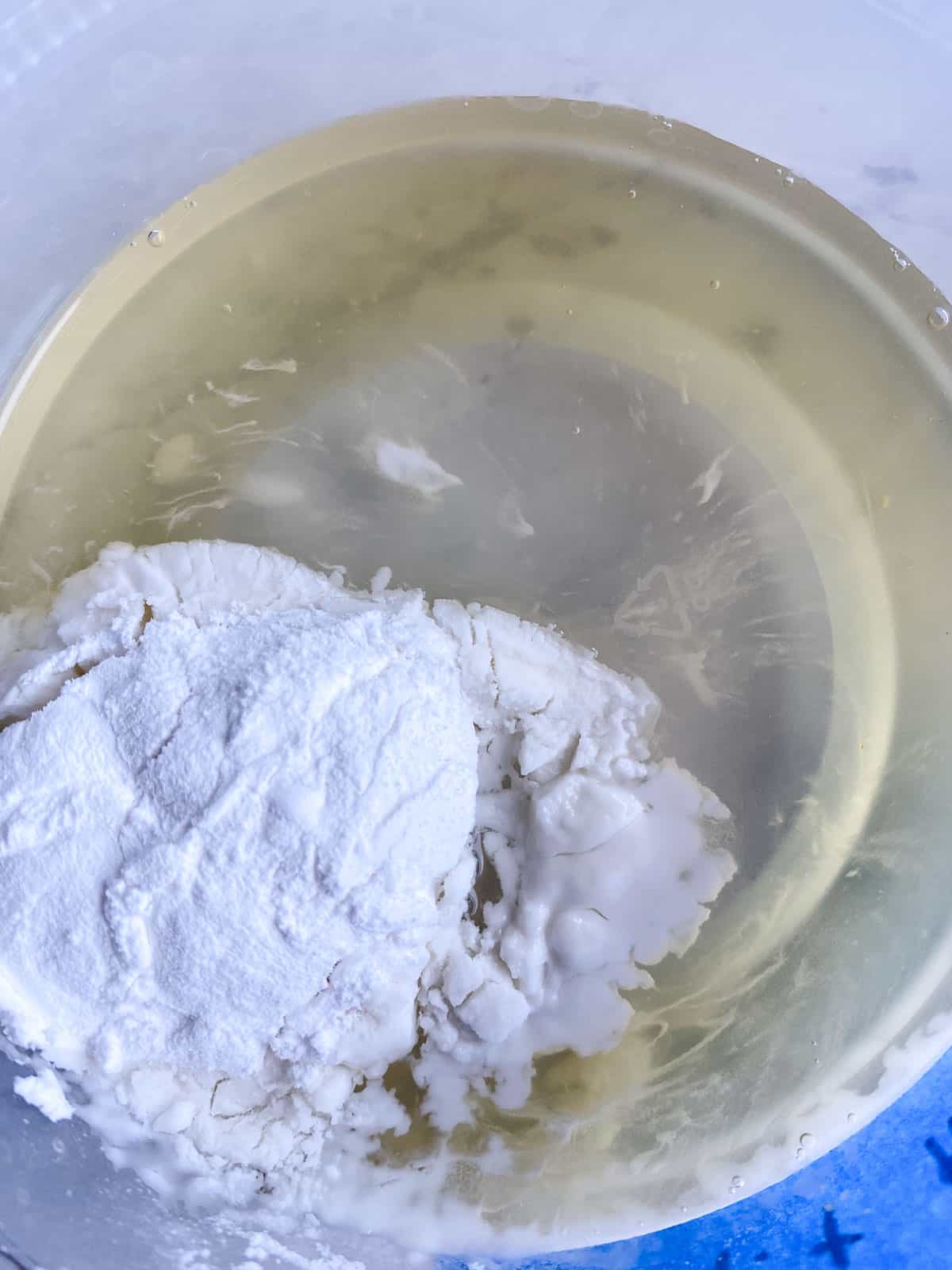
💭 Concerns Over Using Aquafaba
While I was researching the topic, I came across a blog post discouraging the use of aquafaba. I'll list the author's main concerns and opine on each:
BPA: Found in most canning material, but very easy to avoid. Simply choose BPA-free cans / Tetra-Pak packaging or cook your own beans at home.
Sodium: You could always buy unsalted cooked beans and not add any salt while cooking beans yourself.
Digestion-Interfering Nutrients: Phytic acid, which is actually very good for us, is found in beans. They do inhibit mineral absorption, but it's very easy to counteract their effects by simply consuming more bioaccessibility enhancers such as alliums.
Flatulence: Extreme gassiness from eating beans is often a sign that your overall fiber intake is too low. Barring serious intolerances or allergies, the best course of action is to slowly increase fiber in your diet.
Think of it like lifting weights—you'll often have to be sore to build muscle. Avoiding the gym altogether is not the solution. For those who can't tolerate fiber well, I'd highly recommend reading Fiber-Fueled by Dr. Bulsiewicz.

What About Eggs' Nutritional Value?
In nutrition, everything hangs on a balance. The determination of what is healthy can't be made in a vacuum; we need something to compare to, a nutritional target to reach.
In this instance, we're comparing aquafaba with what it was discovered to substitute: real eggs. So here are some of my concerns with consuming chicken eggs:
Salmonella: Eggs are the biggest culprit of salmonella outbreaks: shockingly, one in every 20,000 is contaminated according to the CDC.
In 2020, half a billion eggs were recalled in France due to salmonella risk. Before that, 206 million were recalled in North Carolina.
There are unfortunately many more instances going way back, but you get the gist. We can steel-man the opposing view by mentioning that perfectly cooked eggs are considerably safer in terms of salmonella risk, though still not perfectly safe.
Cholesterol: If you still believe cholesterol is harmless and are downing a bulletproof coffee each morning, please look into what Dr. Greger at NutritionFacts.org has to say.
This website is my preferred guide for evidence-based, non-industry-funded nutrition information. Eggs, egg yolks in particular, are very high in cholesterol.
That's why they were the first thing I cut out of my diet to reduce a high LDL at only 21 years old.
My story is anecdotal of course, but try reducing dietary cholesterol and see if your LDL number doesn't come down.
Choline: Although choline is an essential nutrient, it is undesirable in excess. In eggs, choline is converted into trimethylamine, a toxin that appears to increase risk of premature death when oxidized as TMAO. Choline is found specifically in egg yolks.
Animal Welfare: Last but not least, commercial egg production practices aren't great. I won't mention its exact nature here, but here's a link for the curious.
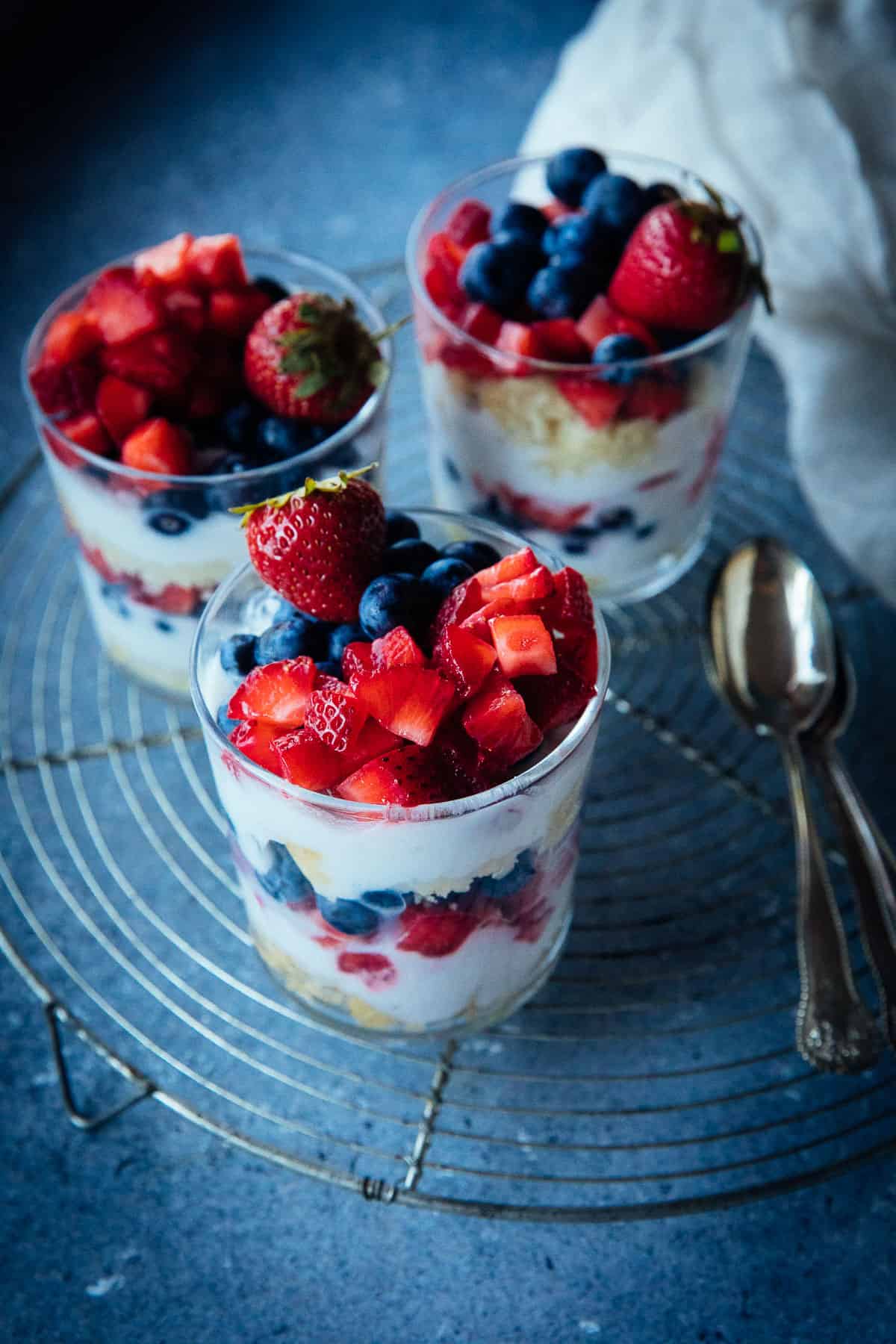
All in all, I'd take phytic acid and extra fiber over salmonella risk any day! Beans are one of the most nutritious foods, consumed religiously by virtually all blue-zone dwellers.
Respectfully, choosing to avoid beans for any supposed health benefits doesn't make sense.
📖 Further Resources on Aquafaba
- Check out this Washington Post article that more or less broke the story.
- Listen to this Cooking Issues podcast episode with Harold McGee (Food Science God) where aquafaba is discussed.
- Read this New York Times article with opinions from famous chefs and aquafaba experts.
❓Aquafaba FAQs
Aquafaba is the viscous liquid in which legumes were cooked. The most popular legume liquid for aquafaba is of chickpeas, but any other bean broth with sufficient viscosity and a somewhat bland flavor profile can be used. Aquafaba is commonly used as an egg white substitute in vegan or egg-free baking.
Use 30 ml (2 tablespoons) of aquafaba to replace one egg. For best results, also add 1 tablespoon of cornstarch and ½ tablespoon of vegan butter to mimic other baking functions of eggs.
You will see "3 tablespoons of aquafaba per egg" all over the internet. This is incorrect. An average medium-sized chicken egg weighs 45 grams and ~75% of it is water. The rest is largely fats and protein. However, aquafaba is made up 95% of water so using an extra tablespoon can drastically change the moisture content in some recipes!
See this guide on how to substitute eggs in different situations and the anatomical makeup of chicken eggs. Eggs serve a different purpose in cakes than they do in cookies, so aquafaba may be the wrong choice for what you're making!
Aquafaba naturally has a bean-like taste when consumed raw, e.g. in cocktails. I recommend adding ½ teaspoon of sugar per each 30ml of aquafaba to mask that taste. Aquafaba usually doesn't impart an off-putting taste to baked goods.
In a 15.5 oz (440 grams) can of chickpeas, there are approximately 200 ml of aquafaba and 240 grams of chickpeas. Aquafaba can be the liquid from any cooked legume, but chickpea aquafaba from a can tends to have the right (i.e. the thickest) consistency. If your aquafaba doesn't seem thick enough, you can always reduce it on the stove.
In a 15.5 oz (440 grams) can of chickpeas, there are approximately 200 ml of aquafaba and 240 grams of chickpeas. In my experience, reducing canned chickpea liquid has never been necessary, whereas the broth from pinto and black beans were much thinner.
The quickest chickpea dish I know is to stir-fry it with olive oil and spices (Aleppo pepper & cumin). So simple and so tasty! You could also go the usual route and make hummus or a bean salad.
Yes. Beans are one of the most nutritious foods, consumed religiously by virtually all blue-zone dwellers.
Yes! Aquafaba was "discovered" by a hungry vegan.
99% of the time, yes. If you have severe intolerances or allergies, it's always a good idea to ask the manufacturer directly regarding any cross-contamination risks.
A 15 oz (425g) can of chickpeas will give you about 6 egg replacers when used in addition to cornstarch and oil.
🍳 More Vegan Egg Content
One thing that aquafaba will never substitute is a poppable vegan egg yolk!
Try my tried-and-tested egg yolk recipe made with spherification techniques. Craving vegan shakshuka? Aquafaba won't help you there either.
Try the menemen (Turkish shakshuka) recipe using silken tofu to substitute eggs! You can also check out the Turkish delight recipe to see how soapwort is used in some its varieties.
Was this guide on aquafaba helpful? I'd love to hear your thoughts! Please comment and leave a star🌟 rating below 🙂
Print📖 Recipe
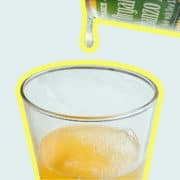
Aquafaba Recipe
- Yield: Replaces 1 Medium Egg 1x
- Diet: Vegan
Description
After reading this detailed guide on the humble bean juice, you'll raise your arm faster than Hermione Granger when asked: "what is aquafaba?". We'll discover the contents, special tips to use, nutritional values, as well as the origins of this mighty egg substitute!
Ingredients
For Cakes & Pancakes (per 1 medium whole egg)
- 2 tablespoons (30 ml) of aquafaba*
- 1 tablespoon (7.5 grams) of cornstarch
- ½ tablespoon (5 grams) of vegan butter or vegetable oil—added along with the rest of the oils/butter in the recipe to compensate for the fat in eggs
For Meringues (per 1 whipped egg white)
- 2 tablespoons (30 ml) of aquafaba
- 1 tablespoon of cornstarch (mixed in with the sugar)
- Sprinkle of cream of tartar
Egg White in Cocktails (per 1 egg white)
- 2 tablespoons (30 ml) of aquafaba
- ½ teaspoon of sugar
Instructions
- Mix each ingredient except the butter in a small bowl and let sit for a minute before adding it in. Add the butter along with the other fat ingredients being used in the recipe.
- When replacing whipped egg whites, make sure to whisk for longer to reach the same consistency. A sprinkle of cream of tartar (less than ⅛ teaspoons per 3 "eggs") helps aquafaba come to firmer peaks much quicker.
- If the recipe instructs whipping the egg whites first to create structure—such as in angel food and chiffon cakes—whisk the aquafaba by itself first and mix the cornstarch with other wet ingredients instead.
Notes
Aquafaba can be the liquid from any cooked legume, but chickpea aquafaba from a can tends to have the right (i.e. the thickest) consistency. If your aquafaba doesn't seem thick enough, you can always reduce it on the stove. Ideally, use unsalted or low-sodium aquafaba from BPA-free cans or Tetra-Pak packaging.
I don't recommend using aquafaba to replace eggs in cookies, custards, quiches, or crepes. An egg's first and foremost mission in these recipes is to provide binding, where aquafaba is insufficient or downright unnecessary. Using a type of starch on its own will do the trick. See this detailed guide to figure out which egg substitute will work best for your unique scenario!


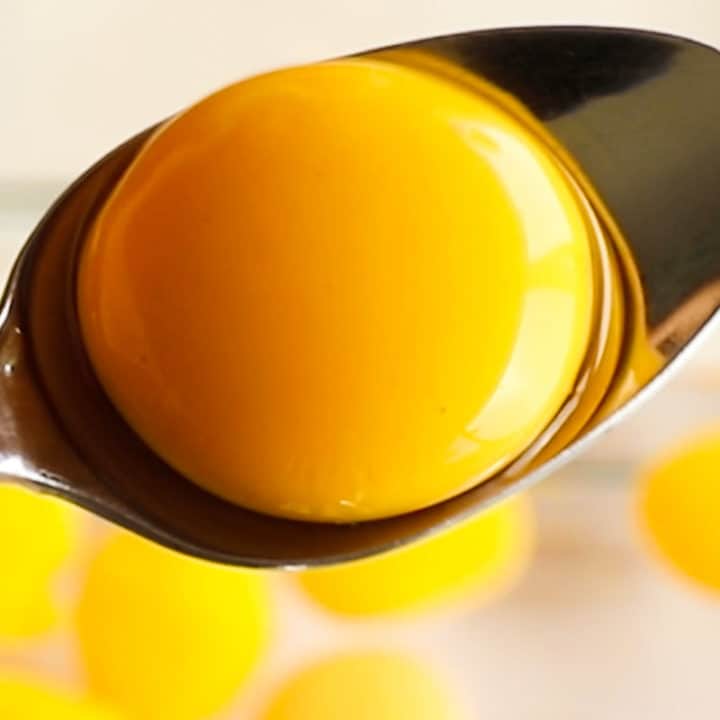

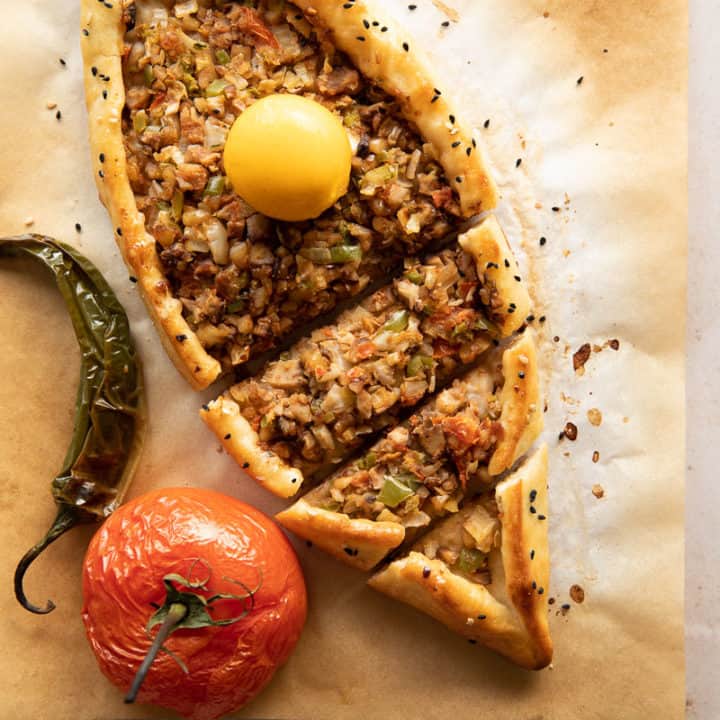

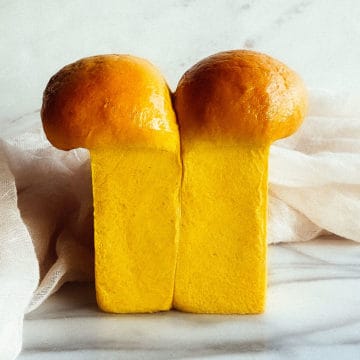
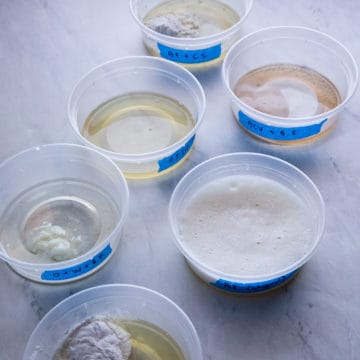
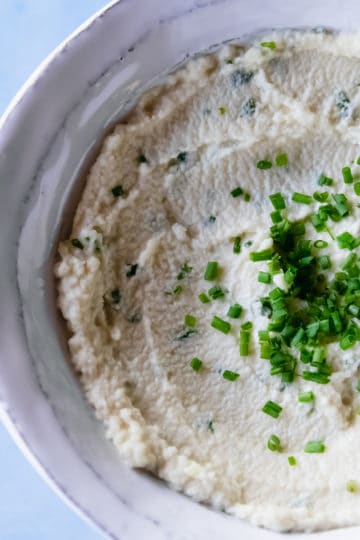
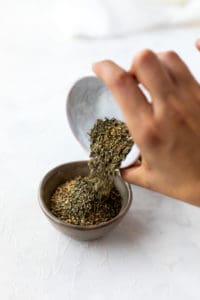

Comments
No Comments